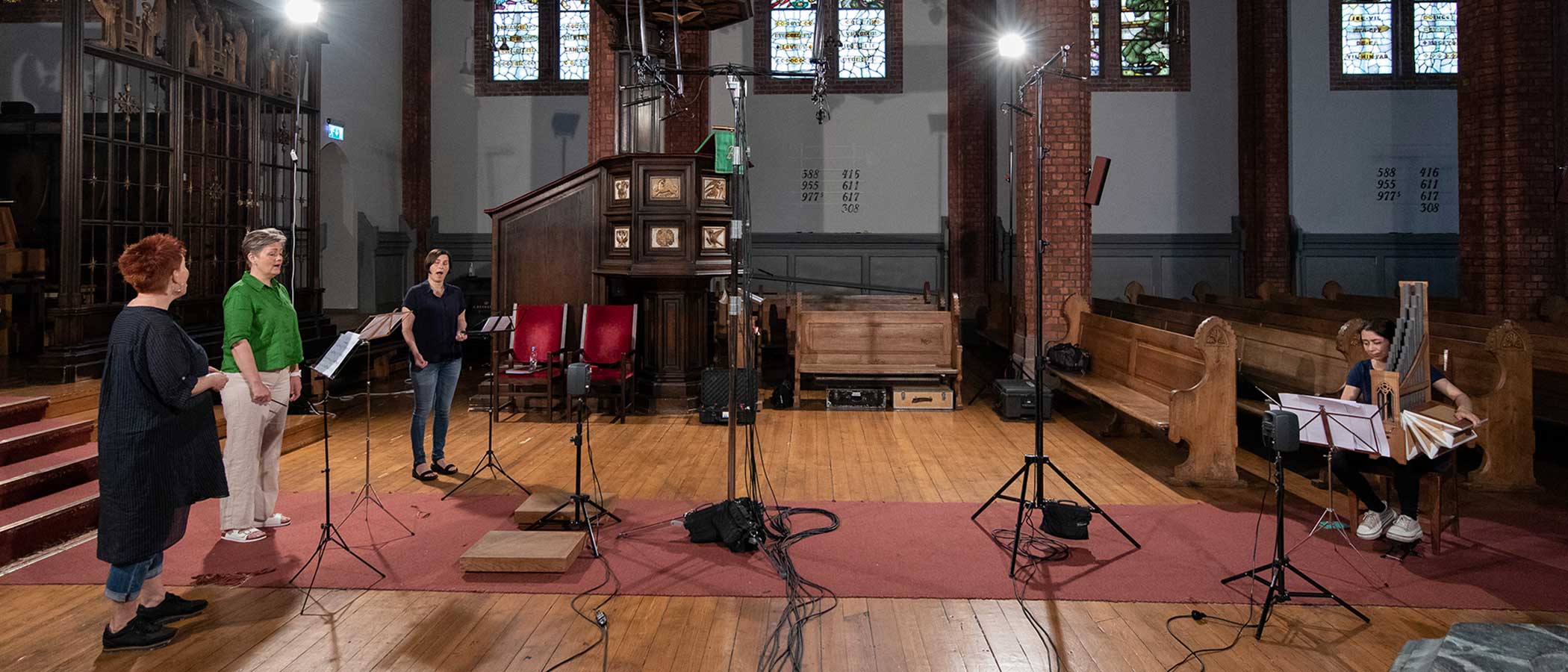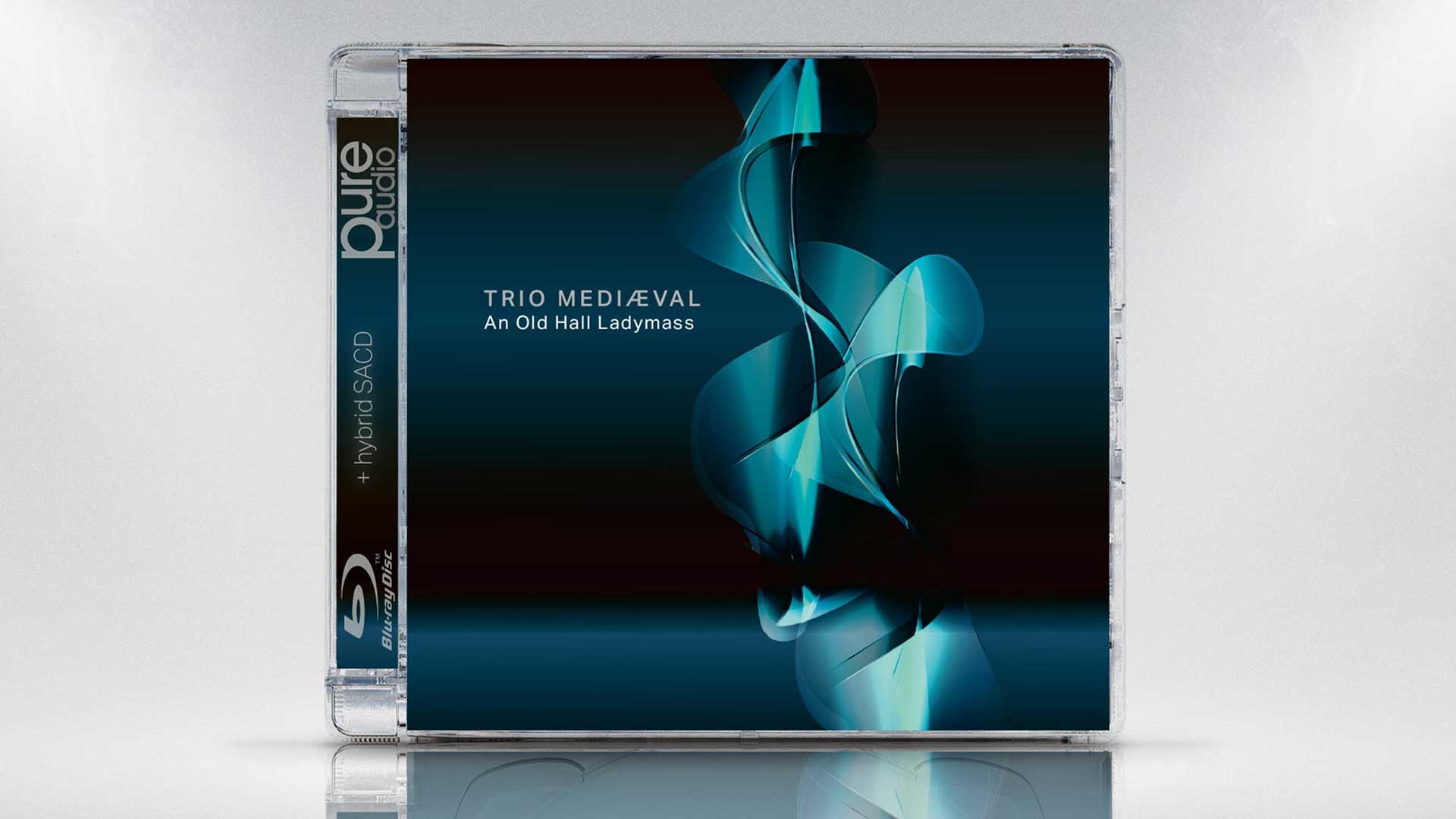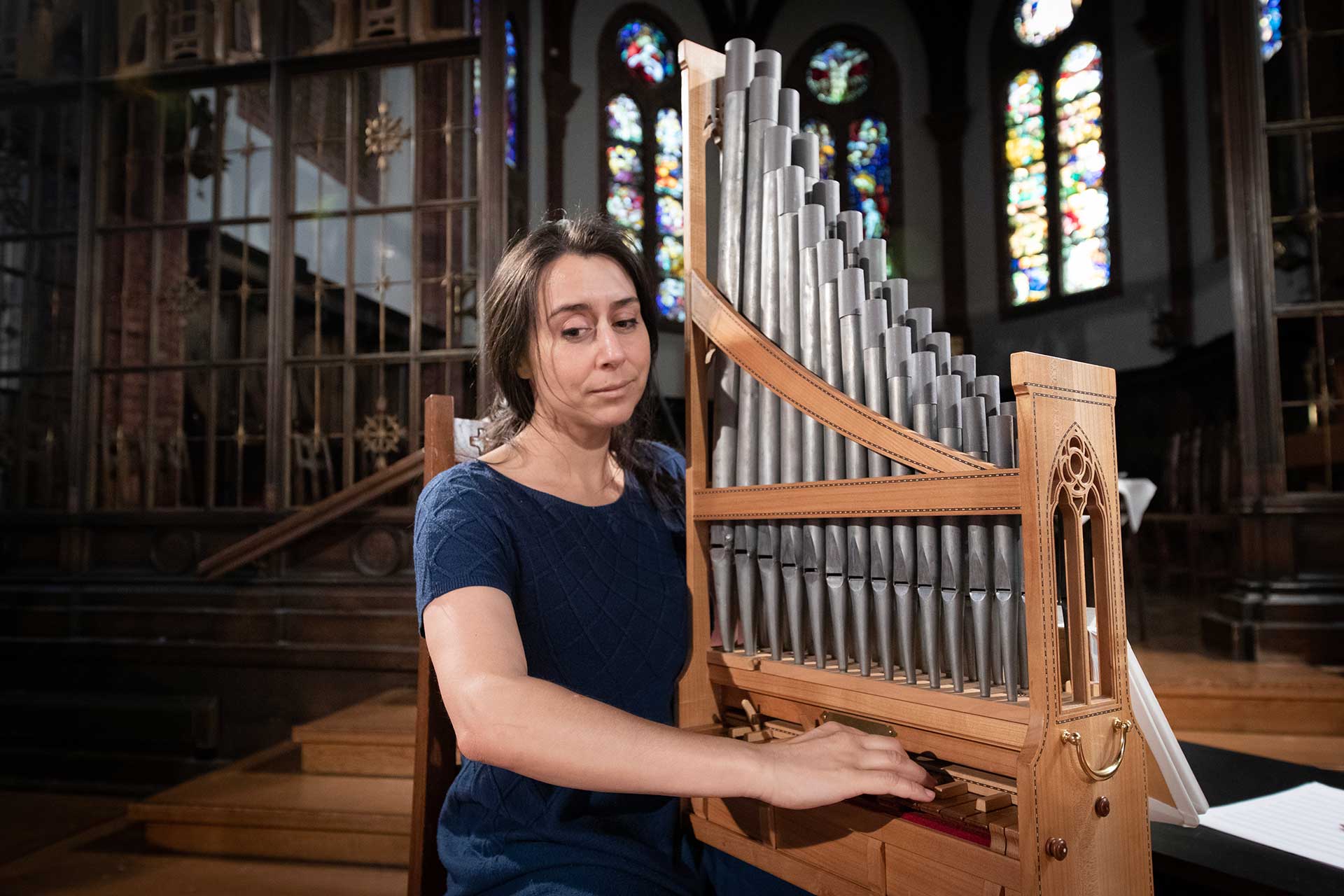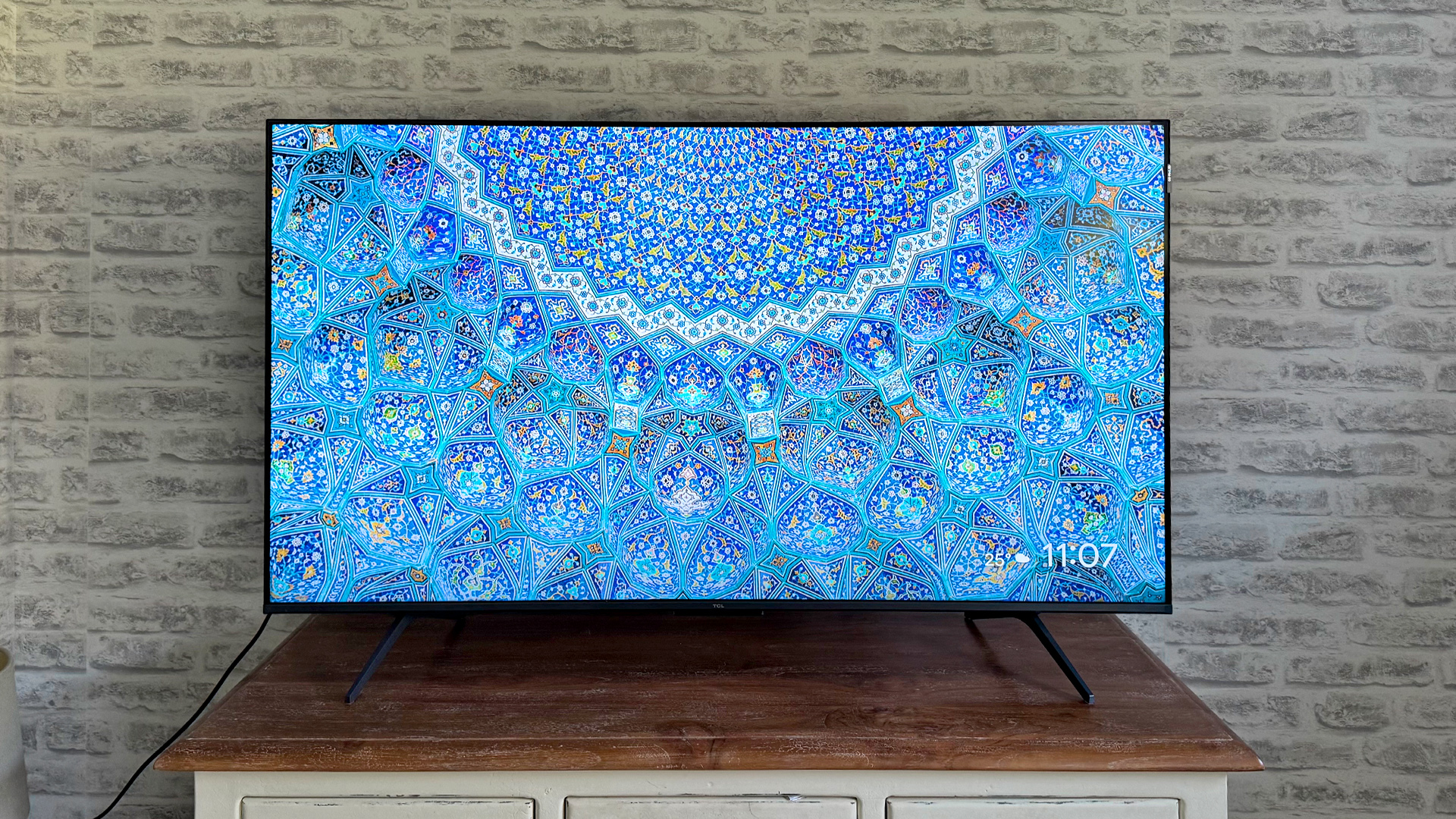Dolby Atmos music just went to another level, and I’ve never heard anything like it
Yes, it's medieval music in a big cathedral. But wow


This feature originally appeared in Sound+Image magazine, Australian sister publication to What Hi-Fi?. Click here for more information on Sound+Image, including digital editions and details on how you can subscribe.
Long before Apple brought spatial audio to the masses (and bless the company for it), in those forgotten days before anyone believed a surround effect could be convincingly delivered from a pair of stereo headphones (and shockingly there are still those who cling to this heretical notion), back before there were even agreed standards for surround sound in the movies, there was already multichannel music.
Multitrack recordings in the 1960s bred multichannel mixes in the 70s, and a full 50 years ago you could choose between a stereo LP of 'The Dark Side of the Moon' or the quadraphonic release which would play back from every corner of the room – provided, of course, that you had a compatible system.
And those lucky hi-fi geeks who did were guaranteed all sorts of cool and happening hippie chicks to come dig their quadrophonic Floyd sounds, man, and long-haired dudes would come share their joints and likely take the hippie chicks away again.
Well, that’s how I remember it. Those halcyon hi-fi times were golden years, a heady mix of a home hi-fi revolution and music that meant something and love that supposedly didn’t, all rolled up together on an LP sleeve in a fading Kodak blur of orange wallpaper and long hair and concepts of free love that have now, of course, been rightly and extensively prosecuted in the courts.
But in the privacy of the private home there has been multichannel fun going on ever since, with a lucky few maintaining contact with the cognoscenti (aka hi-fi ‘dealers’) to sustain the joy and rapture experienced when a multichannel sound system sends pieces of a multichannel mix whipping around a room suitably well-stocked with speakers.
By the tail-end of the 90s, multichannel enthusiasts were largely locking themselves away in dedicated home cinema rooms and watching movies. The likes of Nirvana weren’t interested in spreading grunge across multiple channels for chilled-out listening sessions, although the golden era of the DVD did bring a pleasing period with large numbers of live concert and greatest hits DVDs getting 5.1-channel mixes – some of them even in high-resolution DTS. These DVD mixes still stand up against today’s Dolby Atmos ones, and they deserve to be rescued from street clean-up piles whenever you may find them.
But such multichannel musical joys were experienced by very few: only a sub-set of home cinema owners were as much or more into music than their movies. Very rarely would you find a real multichannel music system. Most systems were more about big movie bang-bang stuff, with the ever-rising provision of subwoofer-borne bass, so that home cinema owners became increasingly isolated in both acoustic and personal terms, though often thrillingly equipped in terms of channel count.
The latest hi-fi, home cinema and tech news, reviews, buying advice and deals, direct to your inbox.
They kept much to themselves. “We don’t want to disturb the neighbours,” was the catch-cry of the home cinema enthusiast at the turn of the millennium, when everyone else was switching to headphones and getting outside a bit. “We don’t want the bad old days of quad and hippies. Or 3D for that matter. Move along, please; leave us alone.”
- The best home cinema speaker systems you can buy

Meanwhile in Norway...
To avoid all this furore and enjoy the rare joys of multichannel music in peace, few went to the extremes of Morten Lindberg, working from an isolated audio oasis half an hour south of Oslo, his mastering studio majestically laden with many channels of mega-accurate Genelec ‘The One’ active speakers.
Lindberg is a recording engineer and producer; his recordings on the 2L label were made over the last 20 years in vast churches and cathedrals. He uses tall antenna-like arrays of microphones that map directly to your speakers at home, so that when you launch one of his Blu-rays or SACDs, you can choose between 5.0 DTS-HD MA at 24-bit/192kHz, or Dolby Atmos in 7.0.4 at 48kHz, or Auro-3D if you hang out with a voice of God in your multichannel arsenal.
Or just (and one should not really say ‘just’) 24-bit/192kHz stereo.

Everything he does is recorded up there, and it’s nearly all vocal-led stuff – choirs and ensembles especially suited to the acoustics of these vast spaces. I don’t know if anyone has ever said, ‘Hey Morten, you want to come down to the Montserrat sunshine and record the Rolling Stones? Or the Cure in a phone box? Or my mate who does Elton John covers?’ You know, something less ethereal?
Presumably not. Perhaps he doesn't tan well. Or perhaps he turns out his multichannel recordings in these far Northern environments because sound is known to hang in the air just that little bit longer up in those sub-Arctic conditions, floating and humming like the aurora borealis, so explaining why his recordings are so ridiculously perfect in their expression of space and detail and sheer magic.
They are not merely immersive but experiential recordings; when your system is right they knit your speakers into the high vaulted cathedral in which they were recorded, and more importantly you are impeccably placed in the middle of the performance. So well-crafted are the recordings that, despite the notably Norwegian focus on material and performers, Lindberg has received 42 Grammy nominations since 2006, dominantly in craft categories like Best Engineered Album, Best Surround Sound Album, Best Immersive Audio Album and Producer of the Year. He is an engineer's engineer. Those in the know know him well.
I have eight of his most recent disc-pairs now – and I should note that you can also stream 2L's music, some of it even in Atmos on Apple Music. But streaming Atmos is highly compressed (an alarming 10:1 compression ratio or thereabouts), and such compression is really not what Morten is about. So the downloaded high-res files from 2L or the double-disc releases (Blu-ray and SACD) really are the way to go.

2L’s 'Trio Mediæval' audio Blu-ray
The latest 2L release, entitled An Old Hall Ladymass, arrived just as I was testing the new Sony STR-AN1000 receiver (the Australian version of the Sony TA-AN1000), of which I’ll pre-empt my full review for Sound+Image only by saying that it’s currently going very well indeed, so much so that my wife has been complaining that I’m spending too long alone in the music room “up there with your surround”.
As part of the multichannel music listening I do with any visiting receiver, I loaded this latest 2L Blu-ray disc, confirmed Atmos was coming through, and settled back to listen.
The performers on this latest 2L disc are the ‘Trio Mediæval’, an unsurprisingly Norwegian vocal trio (though one of them is a Swede), with a number of tracks also featuring one Catalina Vicens, playing something called an organetto, which from the pictures in the sleeve notes seems to be a portable (or perhaps only slightly portable: 'portative' is apparently the correct word) pipe organ which is played a bit like a harp, with a keyboard on the right and a harmonium-like hand pump on the left.
Ms Catalina studies antique keyboard instruments (not to mention being a Professor of Harpsichord) and probably drives around in a small van full of such curious keyboards.
The music, meanwhile, comes from the ‘Old Hall Manuscript’, an exquisitely decorated 15th-century choir book that was lost to history for the best part of 400 years until its reappearance in a Hertfordshire Catholic seminary at the end of the 19th century.
Not your usual bag? Nor mine, I confess. Medieval music is not what I generally load up during hours of leisure – let’s see: if I just let Apple Music play a ‘Favourites’ list for me it’s queueing up Slade, Genesis, Leonard Cohen, Sky and ELO (that’s today’s list; it varies pleasingly).
But I was raised with small-C catholic music tastes, so I’m certainly open to the joys of an Old Hall Ladymass.

It’s very easy to set your levels for playback of 2L recordings: just keep turning it up. There’s nothing to stop you, other than the equipment you’ve attached, so pure are the recordings. You’ll know when you’re there because you really are there; you feel the hall, you feel the height.
This is common across 2L’s recordings, but this one – I don’t know: is it the music, or the recording? I went pretty much transcendent during the opening track – the three singers yes, but that organ? WTF is that organ thing? I could listen to that, in that space, those tones, all night; just wow.
So with the greatest respect to the divine voices of TrioMediæval, I kept waiting for that organ thing to come back. It returned in the intro to track 3; I was pinned in my seat, feeling the space.
And then track 4 happened: Sol lucet, it’s called – ‘the Sun Shines’, according to Google’s translation from Latin. No organ here, just the voices, climbing up and intertwining with some wild vocal intonations in there too. Incredible.

I’ve since streamed this in stereo, and it’s interesting but not incredible. I was also flipping occasionally on the Blu-ray between the DTS high-res 5.0 and the merely 48kHz Atmos. The DTS sounded brighter and more detailed; the Atmos softer. But its hemispherical soundstaging was far more real. All Morten Lindberg’s recordings are excellent, but for me, this is the best yet, the most involving and most perfectly realised in terms of total immersion.
On the chant opening to Regina celi (Queen of the sky), the Trio sets off powerfully over a drone-like wandering organ: the emotionality of this felt more qawwali than Christian chant, and I went transcendent again, off with the fairies. Amazing. If this is how music sounded in a 15th-century cathedral, you can totally see why they’d all believe in God.
Anyway, in summary, it’s the best music recording I’ve yet heard in Atmos – and I've heard a lot. The music is perhaps literally divine, the vocal trio is spellbinding, there's that OMFG unique organ, and bringing it all home is Lindberg’s uncanny capture of the audio world.
After 42 Grammy nominations, he’s hardly a secret. But if you haven’t yet got any 2L recordings, these are great discs to start with. Let Morten Lindberg into your audio world, and he’ll let you into his.
What next for 2L? My money’s on a Norwegian cathedral and some singers. And you know what? Just put in an advance order now.

Jez is the Editor of Sound+Image magazine, having inhabited that role since 2006, more or less a lustrum after departing his UK homeland to adopt an additional nationality under the more favourable climes and skies of Australia. Prior to his desertion he was Editor of the UK's Stuff magazine, and before that Editor of What Hi-Fi? magazine, and before that of the erstwhile Audiophile magazine and of Electronics Today International. He makes music as well as enjoying it, is alarmingly wedded to the notion that Led Zeppelin remains the highest point of rock'n'roll yet attained, though remains willing to assess modern pretenders. He lives in a modest shack on Sydney's Northern Beaches with his Canadian wife Deanna, a rescue greyhound called Jewels, and an assortment of changing wildlife under care. If you're seeking his articles by clicking this profile, you'll see far more of them by switching to the Australian version of WHF.

